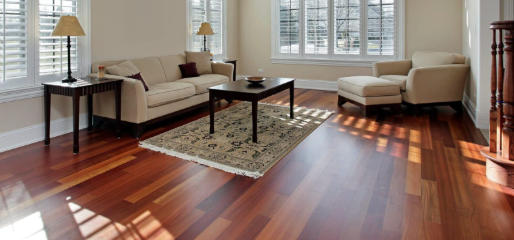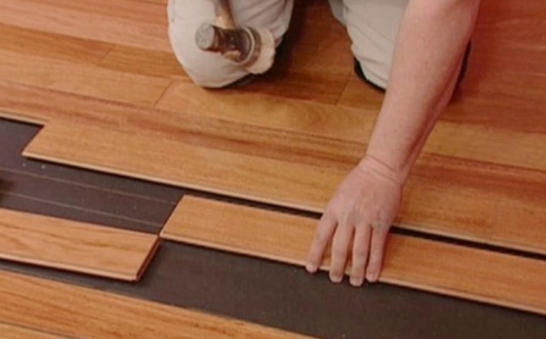Views: 222 Author: Rebecca Publish Time: 2025-10-31 Origin: Site











Content Menu
● Hardwood Timber Pricing in 2025
>> Key Price Benchmarks by Species
>> What Drives Pricing Fluctuations?
● Hardwood Timber Applications and Industry Sectors
>> Commercial and Institutional Projects
● Factors Impacting Hardwood Timber Value
>> Seasonality and Market Cycles
>> International Trade Conditions
● Economic and Investment Analysis
>> The Case for Investing in Timberland
>> Calculating Timber Lot Values
● Sustainability and Certification
>> Forest Management Best Practices
● Hardwood Timber Market Trends in 2025
>> Pricing Momentum and Supply Imbalances
>> Forward Strategies for Buyers and Sellers
>>> Distributors
>>> Manufacturers
>>> Landowners
● Long-Term Outlook: Steady Growth Forecast
● International Perspective and Global Trade
● How to Get Top Dollar for Your Timber
>> 1. What are the most valuable hardwood species in 2025?
>> 2. How do tariffs affect hardwood timber prices?
>> 3. Is hardwood timber value likely to increase further?
>> 4. How important is timber grade for pricing?
>> 5. Should landowners wait or sell timber now?
In 2025, the global hardwood timber market presents new challenges and opportunities for landowners, buyers, and manufacturers. Changing tariffs, persistent supply disruptions, evolving consumer trends, and shifts in housing construction are reshaping timber valuation across North America, Europe, and Asia. Hardwood timber, prized for its strength, beauty, and versatility, remains an attractive investment and essential material for countless industries. This comprehensive guide analyzes current pricing, trends, valuation factors, harvesting economics, sustainability issues, and proven strategies to maximize timber value.[1][6]

Hardwood values are primarily determined by species, grade, and market demand. The industry measures lumber prices per board foot (bf), with thousand-board-foot (MBF) rates providing broader tract and mill benchmarks. Below is a snapshot of 2025 board foot retail prices for popular U.S. hardwoods:
| Species | 4/4 (1") | 5/4 | 6/4 | 8/4 |
|---|---|---|---|---|
| Red Oak | $4.00 | $5.00 | $5.50 | $6.00 |
| White Oak | $7.00 | $8.00 | $9.00 | $12.00 |
| Ash | $6.00 | $6.50 | $6.50 | $7.00 |
| Hickory | $4.50 | $5.50 | $6.50 | $8.00 |
| Cherry | $6.00 | $6.50 | $6.50 | $6.75 |
| Hard Maple | $7.25 | $7.50 | $7.50 | $7.75 |
| Walnut | $10.00 | $11.00 | $11.00 | $12.00 |
| 11 |
White Oak and Walnut are the standout performers, commanding premiums for their utility in flooring, cabinetry, and luxury furniture. Average market values for most hardwoods range from $500–$600 per MBF, but rates can reach $1,000/MBF or higher for prime stocks, logs, or specialty grades. Lumber composite indexes show hardwoods outperforming softwoods, thanks to sustained demand.[6][10][1]
Hardwood pricing in 2025 is shaped by a combination of:
- Supply Chain Constraints: Persistent mill shutdowns, disciplined low inventories, and recovery from disasters like hurricanes restrict available volume.[6]
- Tariffs & Trade Policy: A fresh wave of U.S. import tariffs has added 10% to many lumber categories. This policy shift sent Canadian and European supply toward withdrawal, favoring domestic sellers and pushing up prices.[1]
- Housing Market Trends: The sector is expected to recover with new single-family home starts, although growth is moderate compared to previous peaks.[1][6]
- Remodeling Boom: Increased renovation activity offsetting the dip in new builds continues to absorb hardwood supply for flooring, cabinetry, and millwork.[1]
The majority of hardwood timber finds use in residential buildings, particularly for:
- Flooring: White Oak, Hard Maple, and Hickory are top choices for durability and design versatility.
- Cabinets & Millwork: Premium Cherry and Walnut offer designers and builders unmatched appearance and lasting value.
- Doors and Interior Trim: Red Oak and Ash remain standard for high-strength, cost-effective applications.
The forecast for 995,000–1.13 million single-family housing starts in the U.S. for 2025 means steady demand, especially as lower interest rates encourage cautious optimism.[1]
Hardwood is highly preferred in:
- High-End Retail and Office Spaces: Custom millwork, furniture, and architectural panels drive specialty demand for Rift & Quartered White Oak, Walnut, and rare tropical hardwoods.
- Educational and Government Buildings: Sustainability certifications and U.S.-sourced lumber are increasingly prioritized.
Asia, Europe, and the Middle East continue to source American hardwoods for premium products. The emphasis on Appalachian stocks, especially White Oak and Walnut, persists due to limited global supply and high reliability.[12][1]
Species selection is the number one determinant of value. Walnut, White Oak, and Cherry possess unique properties—color, grain, resistance to wear—that push their prices to the top tier. Grade is similarly vital: clear, straight-grained, defect-free boards command the highest rates.[11][1]
Large-diameter logs from easily accessed tracts are far more valuable, as they reduce harvesting and transportation costs while maximizing sawmill yields.[13][14]
Spring and fall logging can be constrained by wet conditions, leading to temporary scarcity and price spikes. Economic growth cycles, remodeling booms, and interest rate fluctuations all feed into timber price volatility.[6][1]
U.S. tariffs, especially on Canadian and European imports, have doubled in some categories since 2024 and are projected to reach 30% within the year. This spurs domestic production but can exacerbate regional shortages and longer lead times for buyers.[1]

Hardwood timberland offers:
- Long-Term Appreciation: Historically, timber assets have appreciated faster than inflation, especially during housing recoveries and periods of supply constraint.[2][6]
- Income Diversification: Harvesting cycles can be timed for optimal market prices, giving owners flexibility to balance income and asset growth.
- Resilience in Uncertain Times: Timber assets have shown stability through economic shocks, supported by the underlying need for housing and infrastructure materials.[2]
Acres with mature hardwood stocks have vastly different values based on species mix and growth cycles:
- A 10-acre tract with top-quality White Oak might yield 15,000 bf at $7–$12 per bf, or $105,000–$180,000 gross.
- Red Oak tracts, less premium, might yield 10,000 bf at $4–$6 per bf, for $40,000–$60,000.
- Adjustments for grade, harvest cost, and market timing will further define net returns.
Modern hardwood buyers look for more than price—they value sustainability. Forest certification programs (FSC, SFI) assure buyers and end-users that harvested timber originates from responsibly managed forests. This improves market appeal and can sometimes command a price premium for certified stocks.
- Selective Harvesting: Avoids overcutting and preserves ecosystem integrity for future value.
- Species Diversification: Reduces risk and supports healthy forests.
- Replanting and Habitat Restoration: Guarantees future generations will have high-value stands.
- Premium species are rising fastest, with 6–10% increases projected over 2024 even as commodity hardwoods stay relatively steady.[10][6][1]
- Salvaged timber and natural disaster recovery efforts (e.g., in North Carolina, Georgia, California) have unexpectedly tightened supply in some regions, supporting elevated price levels.[6]
- More mill closures and production curtailments persist, supporting prices even if demand softens. Permanent mill shutdowns reduce volume, so surviving mills maintain pricing discipline while upgrading operations.[6][1]
- Lean inventory strategies remain popular, keeping correction risk low.
- Inventory Management: Hold slightly higher inventories to hedge supply gaps and price swings.
- Supplier Diversification: Work with multiple domestic mills and loggers to avoid region-specific shortages.
- Forward Contracting: Secure long-term supply agreements for high-demand products.
- Price Clauses: Utilize contract price escalation clauses to manage cost risk amid inflation.
- Value Engineering: Minimize waste, optimize materials, and substitute species where practical.
- Customer Education: Set realistic expectations around price, lead times, and availability.
- Forest Improvement: Invest in thinning, disease control, and regeneration for long-term gains.
- Harvest Planning: Time harvests for periods of high demand—and consider specialty product markets.
Analysts expect gradual price increases, not explosive spikes, as supply chains recover and demand resumes post-pandemic. Lower interest rates should stimulate building, but the pace of new construction remains below historic highs. The industry is heading toward stability, with sustainable growth in hardwood values, especially for rarer, premium species.[6][1]
Worldwide, North American hardwoods retain a reputation for quality. While European and Asian importers face cost and supply concerns, the U.S. market grows as tariffs encourage domestic sourcing and export demand remains robust for high-end building and manufacturing.[2][1]
Success depends on:
- Choosing high-value species and grades
- Timing harvests to market cycles
- Building direct relationships with reputable mills and buyers
- Pursuing sustainability certification
- Remaining flexible across product categories
Hardwood timber is experiencing strong and steady value growth in 2025, fueled by high demand for premium species, ongoing supply constraints, and far-reaching impacts from tariffs and industry policy changes. Landowners and buyers need to stay vigilant, adapt to market cycles, and embrace best forestry practices and certification standards for sustainable success. With resilient demand from construction, renovation, and export, hardwood timber remains one of the most rewarding natural resource investments—capable of delivering stable returns across turbulent economic conditions.[11][1][6]

Walnut, White Oak, and Cherry remain top earners, thanks to their superior durability, appearance, and strong export demand.[11][1]
U.S. tariffs on imported lumber lift domestic hardwood prices, increase reliance on local mills, and occasionally extend lead times for specialty grades.[1]
Yes, industry forecasts predict moderate but steady appreciation—especially for premium species and high-grade logs—driven by persistent demand and disciplined supply.[6][1]
Grade is critical; straight, clear, defect-free logs fetch the best prices. Lower grades and rustic timber are deeply discounted.[13][11]
Current prices are attractive, especially for top hardwoods. Market timing, species mix, and local demand should guide decisions, but 2025 remains a favorable year for sales.[1][6]
[1](https://selecthardwoodslumber.churchandchurchlumber.com/blog/2025-hardwood-market-outlook-pricing-trends-and-forecasts)
[2](https://nhla.com/news/steady-growth-or-economic-shock-the-hardwood-industry-in-2025/)
[3](https://www.nahb.org/news-and-economics/housing-economics/national-statistics/framing-lumber-prices)
[4](https://fieldreport.caes.uga.edu/publications/AP130-3-13/timber-situation-and-2025-outlook/)
[5](https://www.farmcrediteast.com/en/resources/Industry-Trends-and-Outlooks/Reports/2503KEP_Forestry-Outlook)
[6](https://madeoutwestlandco.com/blog/forecasting-the-2025-timber-market)
[7](https://www.fastmarkets.com/insights/lumber-prices-five-predictions-2025/)
[8](https://www.researchandmarkets.com/reports/5613018/timber-and-wood-product-market-global-forecast)
[9](https://www.mooreandsonforestry.com/post/update-to-our-predictions-of-the-hardwood-timber-market-in-2025)
[10](https://tradingeconomics.com/commodity/lumber)
[11](https://countryconcepts.com/2025-softwood-hardwood-prices/)
[12](https://nhla.com/news/exports-remain-vital-to-the-us-hardwood-industry-but-challenges-and-uncertainty-around-the-globe-continue-to-grow/)
[13](https://www.holstineforestry.com/post/understanding-timber-prices-what-affects-market-value)
[14](https://extension.msstate.edu/publications/what-influences-sawtimber-stumpage-prices)